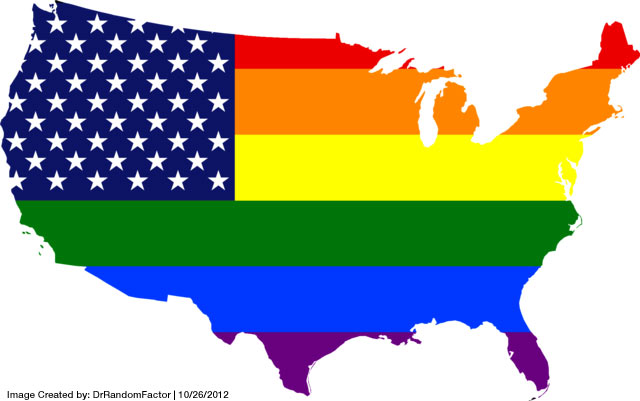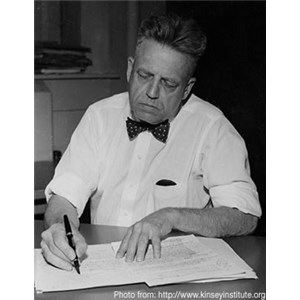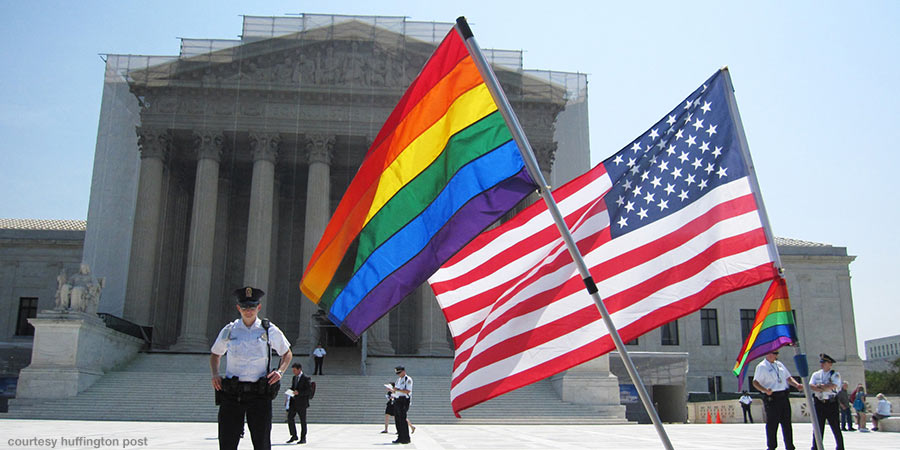LGBT Civil Liberties in America: A Fight for Freedom to Be Human

LGBT Rights in the 30s 40s & 50s
Who is this fella, Kinsey?
The Fiery and Free 60s
Triumphs & Setbacks in the 70s
Political Backlash in the 80s & 90s
Civil Liberties in the 21st Century
Same-Sex Weddings After 2005
Where Do Things Stand Now?
When talking about American civil rights, most folks recall political activities that deal with the liberties of minorities or women. Hardly ever do people recognize that the struggle for lesbian, gay, bisexual, and transgender (LGBTQ) constitutional freedoms also enters the pursuit for equal rights realm, which influences the lives many homosexual bisexual and transgender men and women around the nation.
Branded by many as the civil rights movement for the twenty-first century, the quest LGBT civil liberties has amplified since the battle kicked off almost eight years ago. Nonetheless, LGBT individuals still continue to experience prejudice in numerous parts of American culture today.
To help straighten out the myths and to give Adam and Eve readers some information on the strife that LGBT people have faced to get the movement to where it stands today, we assembled a brief timeline on the topic, which we hope that folks will enjoy reading.
LGBT Rights in the 30s 40s and 50s
From 1920 to 1923, American, Henry Gerber, worked in Germany; and after browsing through some all-gay publications, which were openly distributed across Europe, Gerber started to become aware of the oppression that American culture had forced upon all homosexual men and woman when accusing them of daily "immoral acts."
Soon after arriving home, Gerber established the Society for Human Rights (SHR) in Chicago, the country's first known homosexual establishment.
John T. Graves quickly registered as president, and both men set up a printing shop for editing and releasing, Friendship and Freedom, America's first gay-interest magazine. However, things were rough back home. The United States throughout the 20s was actually in a status of disarray and misconception in regard to the country's sex laws.
Any sort of LGBT social practice in the 20s was looked at as inexcusable, and publishing openly-gay literature was considered obscene, which generally resulted in public dissent against all homosexuals.
Despite the fact that many people insisted the SHR was a decent institution whose sole mandate was only to bring homosexual Chicagoans together and to enlighten legal jurisdictions about the constitution, law enforcement apprehended Gerber in 1924, placed him on trial, and shut down the SHR.
“Nobody believes we can do it –reporters, opponents –except ourselves”
–In Defense of Homosexuality, Gerber, 1925.
Who is this fella, Kinsey?

And so, twenty five years go by, and LGBT folk are still concealing their sexual orientations in terror of prosecution and public embarrassment; and out of the blue, a gentleman named, Alfred Kinsey, arrives and releases a book called, "Sexual Behavior in the Human Male."
Kinsey's monument study stands to this day as the most extensive and the most important review of human sexuality; this publication also informed the general public in layperson's terms that homosexuality is much more common than what most people believed.
Do nearly half of all people in the human gene pool have homoerotic thoughts?
According to Kinsey, society was tagging individuals "homosexual" to defame them and to manage their conduct. He frequently criticized the tactic of labeling LGBT individuals, given that his own analysis of sexual behavior verified that almost forty percent of the total population "has at least some overt homosexual experience to the point of orgasm between adolescence and old age.".
The American people largely approved of Kinsey's groundwork, and individual perspectives towards intimate behavior began to discreetly evolve into a liberal trajectory. The very first birth control pills began to hit the marketplace, and LBGT hate crimes were on the decline for the first time in American history.
Kinsey's open dialogue on sexuality during the 50s brought about the sexual revolution in the following decade, where social morals that limited sex to heterosexual relationships were weakened, which set the course for the LGBT civil liberties to take off.
“The only unnatural sex act is that which you cannot perform.”
–Alfred Kinsey, 1952.
California always seems to play significant roles in LGBT Civil Right Movements.
The official launch of the LBGT civil liberties movement can possibly be traced back to a couple of organizations, which succeeded in surviving a lot longer than Chicago's SHR club did.
On one of those chilly Seattle summer mornings, Phyllis Lyon met Del Martin. Both women were openly gay innovators in their communities who elected to mingle with other lesbian couples to talk about LBGT problems in the San Francisco Bay Area.
Not long after, the Daughters of Bilitis (DOB) society materialized, with the establishment's title sufficiently adequate for public concealment, and, simultaneously, ample enough for lesbians to recognize. DOB was most renowned for managing pubic assemblies on homosexuality and providing counseling to lesbian partners in the soon-to-be-famous Castro District in San Francisco.
Los Angeles also participated in LGBT advocacy during the 50s, when Harry Hay and seven of his buddies embarked on path to reclassify the word "gay American." The adult males called themselves The Mattachine Society, a French term that identifies folks who hide behind masks.
This southern California LGBT institution attempted to create an all-gay neighborhood, and the club motivated its constituents to stand up to any laws that restricted and reprimanded homosexuality. The Society also put on free municipal seminars to explain LGBT rights and established support systems for gay and lesbian women to examine their feelings. The Mattachine Society stayed alive well into the mid-80s before dividing into autonomous groups.
“To understand the lesbian as a sexual being, one must understand
woman as a sexual being.”
–Del Martin, 1958
The Fiery and Free 60s
By the time the 60s came around, the American people were positioned to participate in the sexual revolution, but before "extracurricular sex" kicked off in counter-culture society, a few important events occurred, which nourished the LGBT civil liberty movement even more.
Before 1961, it was against the law for gay men to make love in any American state. Illinois emerged as the first state to reverse its sodomy ordinances, and judicial agitators initiated debates in favor of legalizing confidential-consensual adult homosexual relations on the grounds that "state and federal authorities cannot govern private morality."
You're joking…homosexual acts were a criminal offense in some states?
Sanctioning homosexual acts began to provoke law revisions across the nation's more liberal states like Connecticut. The new pro-sodomy laws eliminated anxiety; it allowed LGBT people to come out of hiding, to talk publicly how they feel, and to start freely demonstrating who they really are.
This newly found independence must have surely been one of the stimulants of a storm that was gradually developing in New York.
There are times to ignore and there are times to rebel!
In the early hours of an autumn morning in 1969, New York City police invaded the Stonewall Inn, a well-liked LGBT bar in Greenwich Village. Homosexual public intimacy was still unlawful in the state, so, the authorities were within their jurisdiction when raiding the Inn.
However, this was an evening that many police officers may have preferred to call in sick rather than showing up to work.
Six days of brutal demonstrations and riots emerged throughout NYC, which was actually not a surprise because the metropolitan area had the largest-sized LBGT population in the United States. Manhattan police officers were equally infamous for extorting anti-sodomy laws, creating vice squads for raiding gay bars and baths, and entrapping LGBT individuals all throughout the 60s.
“This was the Rosa Parks moment, the time that gay people stood up and said no. And once that happened, the whole house of cards that was the system of oppression of gay people started to crumble.”
–Lucian Truscott, The Village Voice.
When the word got out that thousands of New York LGBT individuals resisted police for six days, the entire country appeared to awaken; lots of folks came "out of the closet," openly claiming their sexual identities through Gay Liberation, and they stepped up politically.
Thus, the Stonewall Riots did qualify a significant turning point in modern-day LGBT civil rights advancements in the United States, which thrived in the following decade, but the movement also contained a number of misfortunes.
Triumphs and Setbacks in the 1970s
The LGBT civil freedom movement plunged into the 70s with full force after Stonewall; and even so, homosexual men and women may have been a tad excessively optimistic that the American people were shifting their attitudes; there were still a substantial majority of folks in 1970 who trembled at the notion of offering constitutional freedoms for couples of the same sex.
We demand a new cause-give us one!
Many protestors, educationists, and college students who championed a wide array of reforms on civil controversies during the 60s and the 70s longed for some fresh movements to add to their programs. LGBT rights were installed immediately into "New Leftist's" and hippie demonstrations that tore across major cities and college campuses around the nation.
The New Leftist was a semi-organized party of young people, primarily Caucasian, who started turning up to propose civil rights for minorities and to object to the Vietnam War. It was not too long afterwards that many middle-class moms and dads living in US suburban areas, who sent their children off to college year before, started to hear their kids discuss gay marriage and domestic partnership during Thanksgiving break.
These topics were taboo a few years back, and conventional parents mistakenly assumed that the LGBT civil rights movement was in some way contaminating their children.
News Bulletin: Gay Lawmaker Wins Local Government Seat

Even the country's most liberal cities like San Francisco, California, encountered their share of conservative opposition to LGBT causes. Harvey Milk became San Francisco's first openly-gay supervisor in 1978.
Milk was recognized for unlocking doors for LGBT folks across the city by campaigning for their civil liberties. He entered into the civic sector expecting to generate change, but on one warm day in front of City Hall, "the Mayor of Castro Street" was murdered together with Mayor Moscone, shot by former city superintendent, Dan White.
White had dropped out of the city council days before to oppose Moscone's acceptance of the city's very first LGBT rights bill.
“If a bullet should enter my brain, let that bullet destroy every closet door.”
–Harvey Milk, 1978.
Nearly one year after Milk's death, over one-hundred-thousand LGBT men and women rallied and marched in Washington DC to petition civil rights legislation.
The National March on Washington for Lesbian and Gay Rights was a grassroots initiative to assemble gay and lesbian people and their advocates from all over the nation to carry out a manifestation. Some of the ultimatums that organizers wished government officials to address were:
- Passing an all-encompassing LGBT bill of rights.
- Issuing an executive order that prohibits bias based on sexual orientation.
- Eliminating all anti-LGBT laws.
- Stopping constitutional discrimination in lesbian-mother and gay-father guardianship litigation.
This also was the very first time that the American public witnessed an ambitious LGBT action on national television, which may have added to the conservative retaliation that prevented LGBT advances, which was to take place over the next fifteen years.
Political Backlash in the 80s and 90s
The AIDS-HIV epidemic struck the nation hard in the early eighties. Not only were doctors not ready for the epidemic, but they also had no idea as to how people developed the virus or where the illness was coming from. Five pneumonia deaths rapidly became forty-one incidents of a "rare cancer," and the CDC purposely documented that all the victims were homosexual men.
So, early on, Americans tagged the HIV virus "the gay disease," and a panic began to develop in the LGBT community, as most worried that the federal government would soon sequester them to control the epidemic.
AIDS hysteria during the 80s also involved the notion that HIV was contracted through kissing and hugging LGBT people or that someone could even get the virus from using public bathrooms or from mosquitoes that previously bit homosexual people.
“I know one man who was impotent who gave AIDS to his wife,
and the only thing they did was kiss.”
–Pat Robertson, 1982.
None of the urban legends materialized, but the HIV epidemic in the 80s absolutely caused heterosexual people to fear the LGBT community even more, and the disease also altered the way the LGBT observed themselves as a free-loving society.
Even after the general public learned what HIV was about and learned how to avoid infection, the silly preconception that LGBT folks were somehow responsible for bringing the virus to America stuck.
This stigma, in addition to the fact that homosexual men and women did not quit championing their civil rights, is what triggered an escalation of hate crimes against the LGBT community, which rose significantly from the late 80s into the mid-90s.
In 1987, one LGBT hate crime was committed approximately every hour.
LGBT men and women were assaulted, murdered, harassed, and victimized in practically every state in the union during this period. However, the LBGT community did not lie down; they soon created a National Gay Task Force to organize an anti-violence initiative.
The Task Force's objective was to release hard facts, numbers and testaments, which US lawmakers and US Supreme Court Justices could not ignore. Their efforts soon result in the Hate Crimes Statistics Act of 1988, which President George H. W. Bush endorsed into law in 1990, making it a federal crime for any violent act that involves hatred based on sexual orientation.
The Violent Crime Control and Law Enforcement Act of 1994 quickly followed, which included harsher punishments for individuals associated with hate crimes.
“From the deepest desires often come the deadliest hate.”
–Socrates.
It really seemed like things were looking up for the LGBT civil liberties initiative; unfortunately, along came what was most likely the country's final "conservative" full-force effort at limiting gay rights.
President Bill Clinton signed the Defense of Marriage Act (DOMA) into law in 1996, which allowed states to nullify same-sex marriages; socially conservative organizations like the Family Research Council were responsible for pushing the DOMA bill through Congress.
Now, are you saying I can never marry the one who I love?
The Supreme Court of Hawaii demanded that the federal government take a position on same-sex marriages, or else the states would begin to take matters in their own hands, which gave birth to the DOMA (a.k.a. the civil liberties killer among the LGBT community).
Although the new law did offer a sense of relief for those Americans who worried that LGBT couples would soon have the right to wed in their own state, the measure itself would quickly become short-lived.
Civil Liberties in the 21st Century
It is without question that the turn of the century not only extended LGBT civil rights, but it also ended up being the decade where the most change would happen for gay rights.
The DOMA act gradually began to loosen up after 2000 when the Supreme Court concurred to strike down Colorado's pursuit to unprotect LGBT people from sexual orientation discrimination. The justices conceded that all American homosexual, bisexual and transgender men and women are sheltered under the Constitution's Fourteenth Amendment.
This was the first time America's highest court favorably addressed the issue of LGBT rights after ordering that sodomy laws were constitutional in 1986; a significant indicator that the law, which does hinge on society, was undoubtedly changing.
Public reaction to the Supreme Court's decision was, initially, favorable. The Vermont Legislator was the first in the United States to successfully pass a law that established civil unions for same-sex couples.
LBGT couples in Vermont soon possessed the exact same liberties and benefits of marriage that heterosexual men and women did under state legislation. The Vermont Supreme Court sustained the statute immediately after, acknowledging that LGBT couples should be granted equal civil liberties as others in the state.
The judges are now on board!
The Supreme Court supercharged the LGBT civil rights movement once again, in 2003, when it announced that every single sodomy law in the United States was unconstitutional. The ruling made homosexual activity between consenting adults legal in every state by revoking all sodomy laws in Texas and in thirteen other states that continued to honor them.
Right away, after the Supreme Court's verdict, conservative lawmakers voted in opposition to modify the Constitution for disallowing gay marriage. However, a federal government ban on same-sex marriage was encouraged by President George Bush, who soon set up a committee to explore amending the Constitution to reflect "opposite-sex-marriage-only." in 2004.
“I do not support a constitutional amendment to prohibit gay marriage.”
–Corrine Brown, US Congresswoman.
After a couple of encouraging Supreme Court opinions and some unexpected assistance from a conservative Congress, it appeared that setting up equal rights for all LGBT folks was no longer a becoming a "non-issue" in America, but rather a "when-is-it-going-to-happen" issue.
Same-Sex Weddings After 2005
Massachusetts blazed a trail for other states to follow when it ended up being the first state in the union to sanction same-sex marriages. LGBT couples from around the nation soon overwhelmed the City of Cambridge to apply for marriage licenses.
The states of Connecticut, New Jersey, New York and Oregon immediately followed, while some state Supreme Courts did nullify same-sex marriage licenses after holding that the metropolitan areas which provided the licenses did not have the authority to do so.
Not all people were thrilled about the LGBT marriage trend hitting American society, as in 2004, over eighty percent of states implemented policies or constitutional changes that prevented same-sex marriages. The Deep South led the fight to keep marital relationships defined as a blessed vow under God "between a man and a woman."
The concept of minimizing LGBT civil liberties by not permitting them to tie the knot extended west, and it continued across the entire middle states, ultimately heading the north to the Dakotas.
It was only the in East and West Coast regions where same-sex marriages began to smash the religious stigma that the majority of the nation placed upon it.
California did what?
Ironically, liberal California prohibited same-sex marriages after San Francisco Mayor Gavin Newsom began providing marriage licenses to same-sex couples in 2004. Identical events occurred in Arizona in 2006, which lead voters there to authorize a constitutional change that characterized marriage as a union between a man and a woman.
That being said, state remedies did not detour the United States Legislator, Courts or even the President from safeguarding basic civil rights for all LBGT citizens residing in the United States.
In 2008, after a three-year, "thumbs up-thumbs down" battle on the LGBT marriage issue, newly elected President Barack Obama signed a memorandum offering benefits to same-sex partners of federal employees.
This executive mandate called upon federal agencies to broaden a full range of benefits to the children and same-sex companions of any federal worker who applied for it.
“…when you start playing around with constitutions, just to prohibit somebody who cares about another person, it just seems to me that's not what America's about.”
–President Obama, 2008.
A conservative Congress did what?
The next year, the District of Columbia endorsed a law approving same-sex marital rites. LGBT couples could also record their domestic partnership in the nation's capitol as well.
What made this landmark legislation so significant, aside from that fact that it expanded LGBT civil rights, was that is indicated pro, LGBT marriage laws were ultimately heading south.
Where do things stand now?

Today, we're living in 2015, and a whole lot has changed since Henry Gerber started the Society for Human Rights (SHR) in 1924.
We could look at how the California Supreme Court finally nullified Proposition Eight, the state ballot measure that blocked LGBT marriage in 2003.
Or, we could talk about how some standout conservative politicians organized and signed a legal brief in 2013 that was routed to the Supreme Court, which acknowledged that all LGBT people have a constitutional liberty to marry.
All of which were vital steps that confirm the LGBT civil liberties movement is very much alive and well and still kicking in 2014.
But, let's finish this short discussion with a very important note, in the event there are a handful of skeptics out there who are reviewing this timeline in disagreement.
On June 26, 2013, the United States Supreme Court declared that it's unconstitutional, consequently, illegal, for any state in the union to refuse to recognize a same-sex marriage.
Then, two years later on June 26, 2015, the Supreme Court ruled that same-sex couples can legally marry in every state in the nation. The court’s 4-3 decision was not without its controversy, but it nevertheless stands as one of the biggest victories for the LGBT community in the U.S. to date.
“…Gay rights are human rights.”
–Hillary Clinton.




